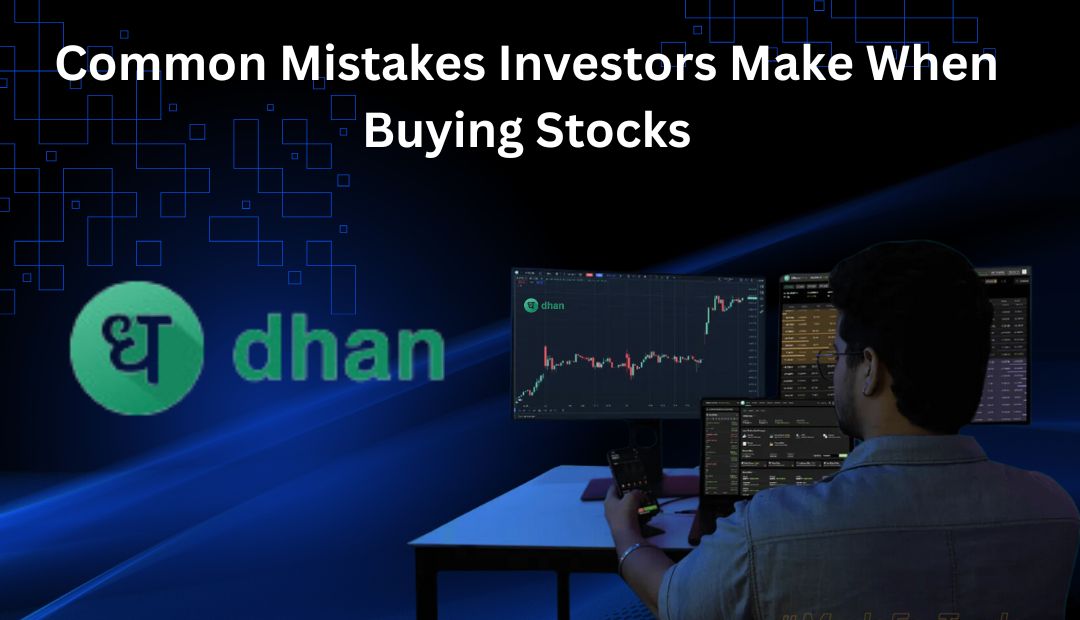It is common to make mistakes while participating in the stock market. However, investors must be vigilant about certain common factors. Emotional decision-making, incomplete research, and investing in a stock because of some preconceived notions are among the most common errors that should be avoided while investing.
Read on to learn more about how you can avoid mistakes and prevent losing money.
6 Mistakes Investors Make When Buying Stocks
Here are six mistakes to avoid in the share market today, tomorrow and always.
1. Over and Under Diversifying Portfolio
Achieving a balanced portfolio can be a challenging task for many but is essential to create one to ensure stable returns. While an over-diversified portfolio can dilute returns, an under-diversified portfolio comes with risks. Therefore, spread your investments across sectors like pharmaceutical, fast-moving consumer goods, energy, and banks to name a few.
2. Maintaining Herd Mentality
Investing in the stock market based on rumors or information that a person receives from social media is not a smart decision.
For instance, one of the biggest scams of the Indian stock market happened in the early 1990s when Harshad Mehta identified a few loopholes in the system. People did not research enough and invested money based on word-of-mouth. The stock market crashed once the scan was exposed making investors withdraw millions.
Secondly, no two investors are the same. Therefore, never invest in the stock market without setting your priorities right and understanding your financial condition.
3. Focusing on Stock Price Alone
Focusing on the stock price alone is never sufficient. An investor must check all the necessary parameters of a company before making any investment.
For example, Price-To-Book assesses whether a stock is overvalued or under-valued and Price-To-Earning Ratio tells how much growth potential a stock has.
Check the total net worth of a company and how much it has increased over a period. Other metrics that must be checked are the Debt-To-Equity Ratio, Return on Equity (ROE), and the kind of cash flow a company has after accounting for capital expenditure.
4. Sidelining Tax Implications
Before you buy stocks, learn about how much tax is deducted from the returns. Short-Term Capital Gains Tax and Long-Term Capital Gains Tax are levied on the earnings. Assets held for 12 months are called Short-Term assets whereas those held for more than 12 months are called Long-Term.
The long-term capital gains exemption on shares, equity units, and business trusts has gone up from Rs 1 lakh to Rs 1.25 lakhs and the tax rate has increased from 10% to 12.50%. The short-term capital gains tax, on the other hand, has gone up from 15% to 20%. Therefore, investments must be made according to these tax implications so that earnings are calculated accordingly.
5. Emotional Trading
Certain investors prefer buying stocks of companies that are owned and run by a particular family. They attach a sentimental value to a purchase and end up investing in stocks that do not give stable returns. Greed leads to underestimating risks whereas fear among investors leads to overestimating risks.
Therefore, the trick is to follow a balanced approach in which investors do not get overconfident during market highs and do not resort to panic selling when the market is in a downturn.
6. Timing The Market
To invest in stocks, there are 2 strategies usually followed by investors:
- Timing the market
- Buy and hold
Timing the market enables a person to shift investments in and out of financial markets or between asset classes based on the market forecast.
Investors try to predict market movements to capitalize on these fluctuations and make a profitable trade. Buy and hold, on the other hand, is a strategy in which investors buy a share for the long term and sell it when they need the return for a purpose. The focus should be on long-term goals as that removes short-term market noise.
Conclusion
Every investor is different, therefore, their idea and purpose of investment varies accordingly. Remember to learn about the latest trends and have complete knowledge about your investment so that you can diversify accordingly.
